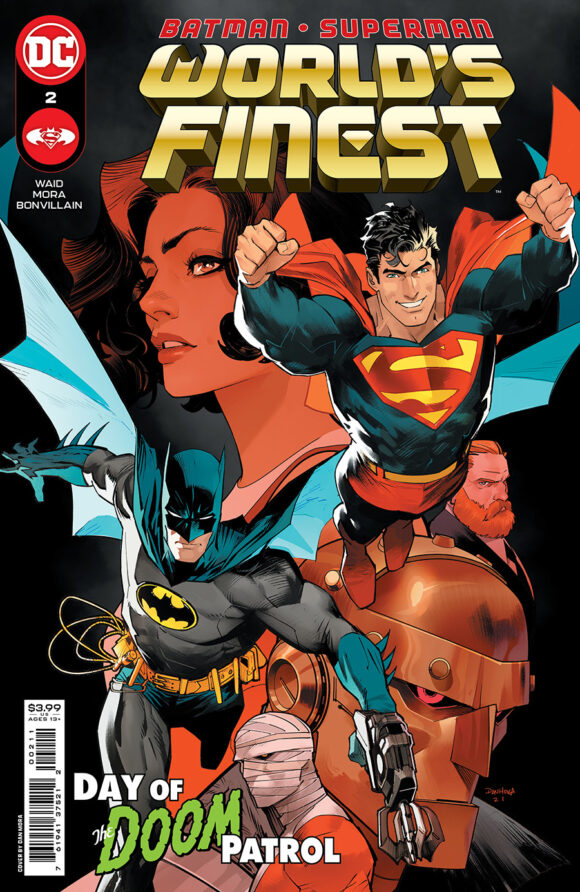MARK WAID kicks off CAPTAIN ACTION WEEK with an INSIDE LOOK at the premiere issue…
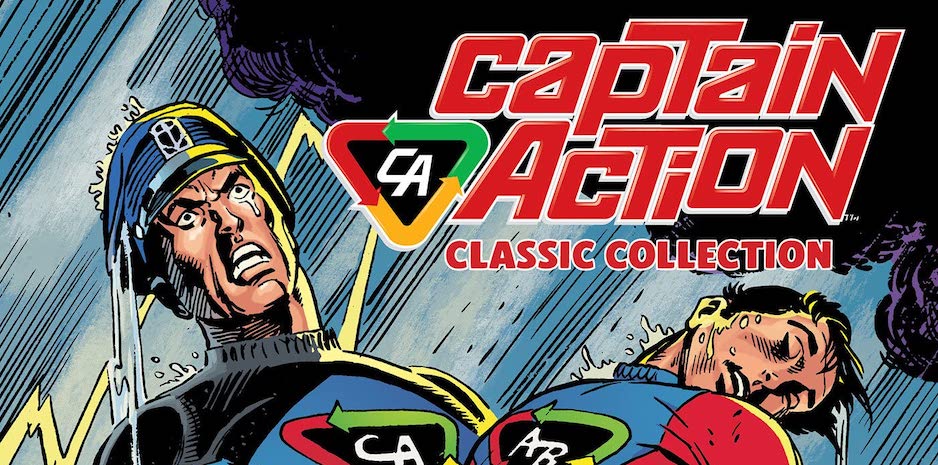
—
Welcome to CAPTAIN ACTION WEEK! This week, IDW is releasing the hardcover Captain Action Classic Collection, which comprises DC’s short-lived, cult fave 1960s comic-book series based on the beloved Ideal toy line. Given this august occasion, we’ve gathered an all-star crew of CA experts and fans to bring you an issue-by-issue breakdown of the series, sort of an unofficial commentary track to the book. Not just that, we’ll have other Captain Action material, both new and from the vaults. Click here for our complete INDEX of features. You will most certainly be glad you did. Right on. — Dan
—
By MARK WAID
I loved — have loved — DC Comics from the day in March of 1966 when my Dad handed me a copy of Batman #180. At that age, like all of us, I had limited resources (an allowance of a quarter a week bought two 12-cent comics in addition to whatever I could nag my grandparents to purchase for me), so I wasn’t all in at first.
I started with the Batman titles, including the one he shared with Superman, World’s Finest Comics. World’s Finest led me to the Superman line, and since Superman had friends, that led me to Justice League of America, which in turn led me to The Flash and Green Lantern, which… well, you get the idea.
But all of these were titles that had been published for years, if not decades. Captain Action #1 was the very first series where I got in on the ground floor, which at age 6 was thrilling — something that felt made just for me! That single issue remains one of my favorite comics to this day, and here are 13 reasons:
—
1. That It Exists at All. Hard to believe in a day when shops are filled with comics starring G.I. Joe, Transformers and My Little Pony, while online shrines are built to the Micronauts and Rom, but comics based on toys were just Not A Thing in the 1960s. In fact, at the time Captain Action #1 was released in August of 1968, there wasn’t a single other toy-based comic on the stands and hadn’t been for years (I checked). No one is sure to this day why DC took a flyer on such a project, but I’m glad they did.
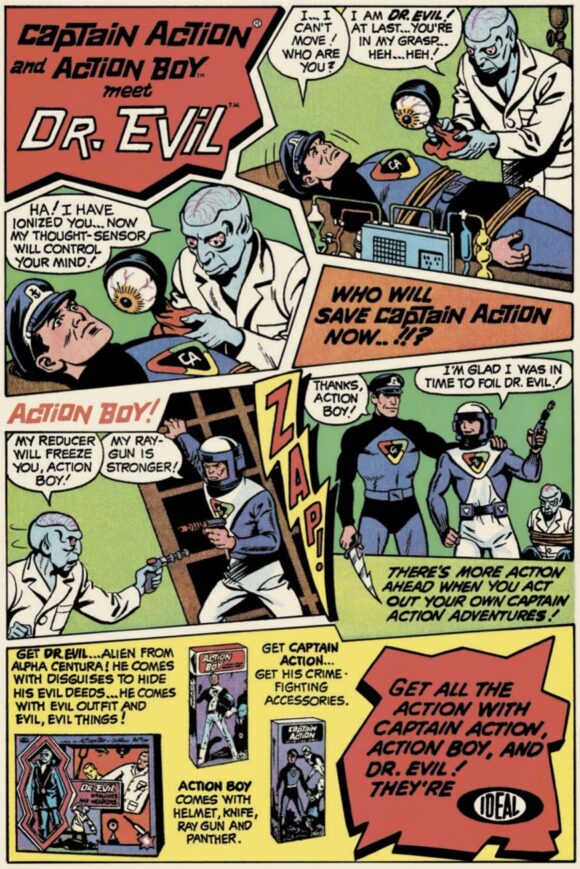
Toy ad
—
2. That Cover. One side, Superman! The Man of Steel was DC’s crown jewel character (and was until 1989’s Batman film cemented the Dark Knight’s top position), and here was some upstart shoving him out of the way, great shorthand for “here’s a new, badass superhero you should be paying attention to, kids.”
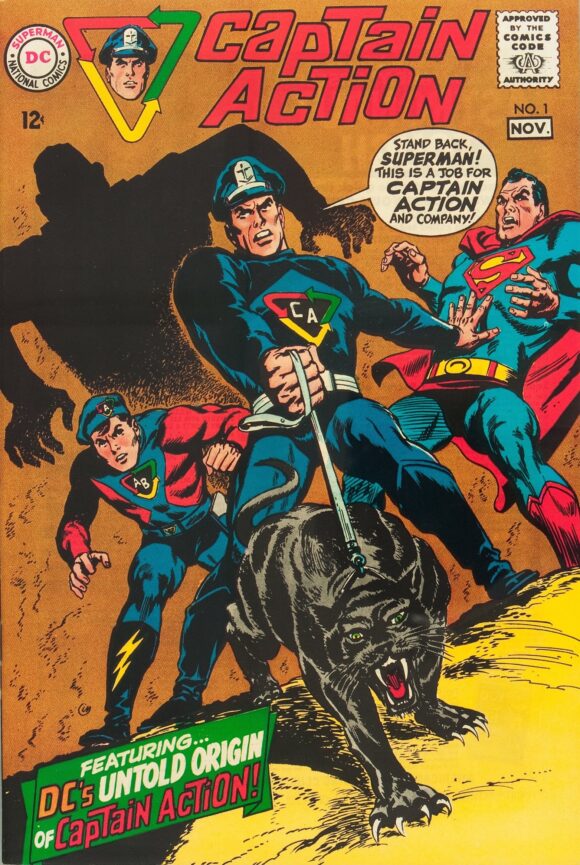
Irv Novick
—
3. That There Are Credits. Not the creators (see below), just the existence of credits. Editor Mort Weisinger kicked off this series, the first time he’d handled a non-Superman title in over a decade, and Mort (like most other DC editors) never, ever handed out creator credits, wanting us to believe that DC and its characters were the stars, created by nameless magical elves. But Wally Wood, unprompted, put his and Jim Shooter’s names on Page 1, and for whatever reason, in a first for Mort, he didn’t remove them.
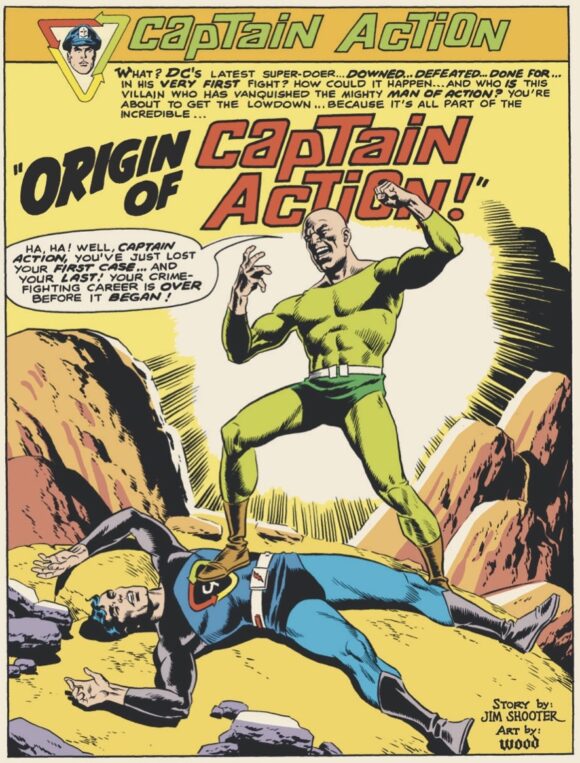
—
4. Jim Shooter. Mort hired Shooter in 1966 (on Adventure Comics’ Legion of Super-Heroes series) when Jim was barely 14 years old, because Mort (rightly) saw something in the kid that was worth nurturing. What set Shooter apart from his contemporaries was the way he combined plot mechanics with genuine emotional stakes, and this comic is rife with emotion.
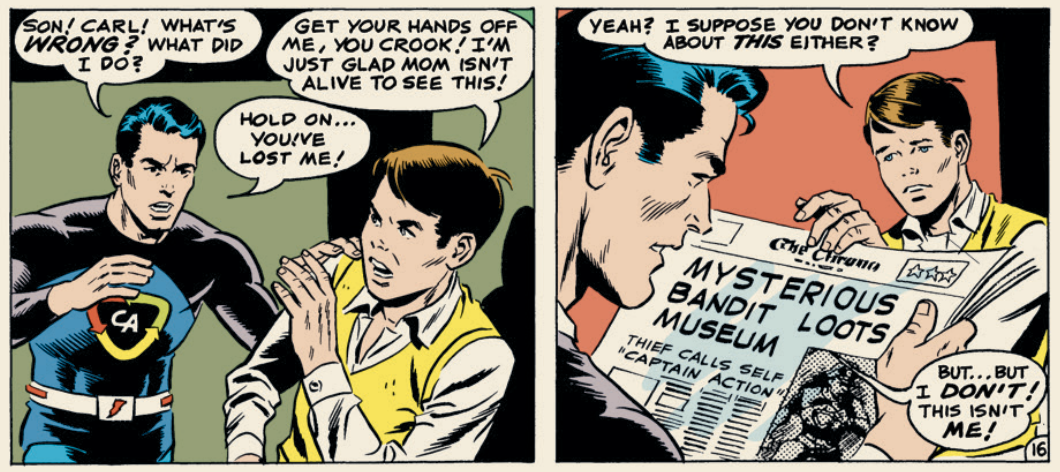
—
5. Wally Wood. One of the greatest and most influential comics artists of all time, Woody hadn’t worked at DC for nearly 10 years. Having just walked away from the Hindenburg that was the upstart, short-lived Tower Comics, he was drafted back into service by his old EC Comics colleague-turned-DC editor, Joe Orlando. By all accounts, Mort was an absolute tyrant to work for, so I’m surprised Woody lasted two pages, much less two issues.
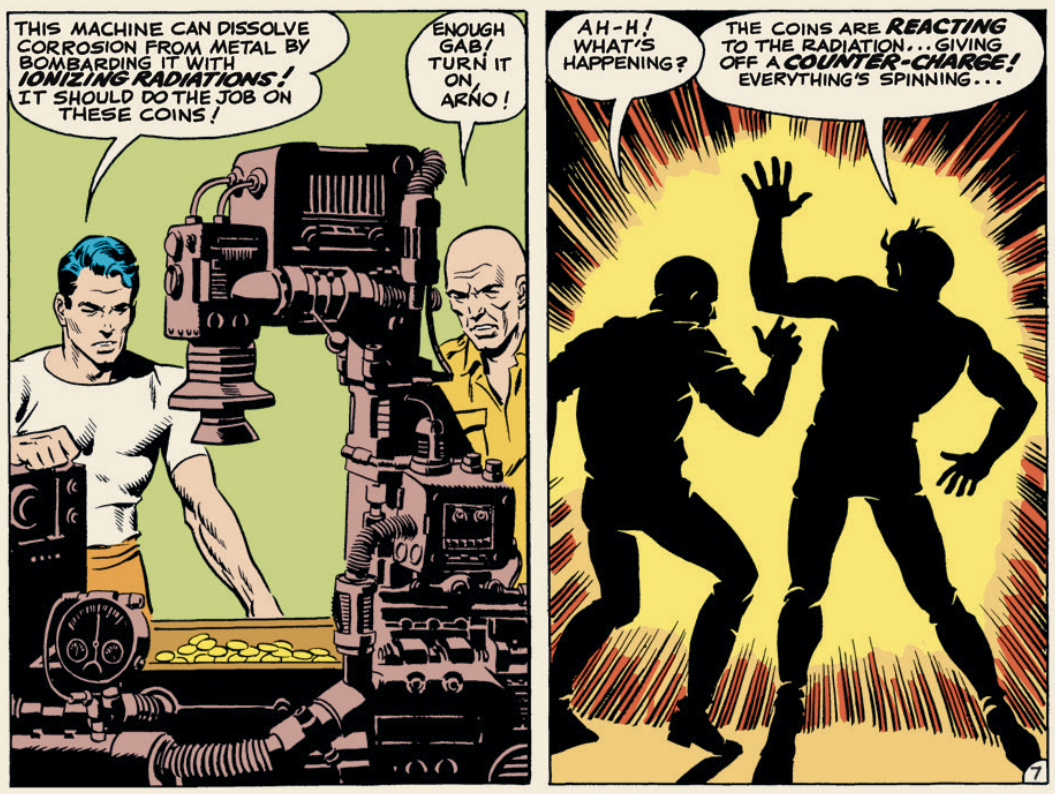
—
6. In Media Res. The DC Comics house style was simple and unwavering at the time. Tell the story linearly. Set up the problem, have the hero come in, solve the problem, the end. Captain Action #1, in an attempt to replicate some of Marvel’s slam-bang-from-the-top action (uncommon in DC stories), instead starts in the middle and then flashes back to fill us in with all that messy exposition. Neat.
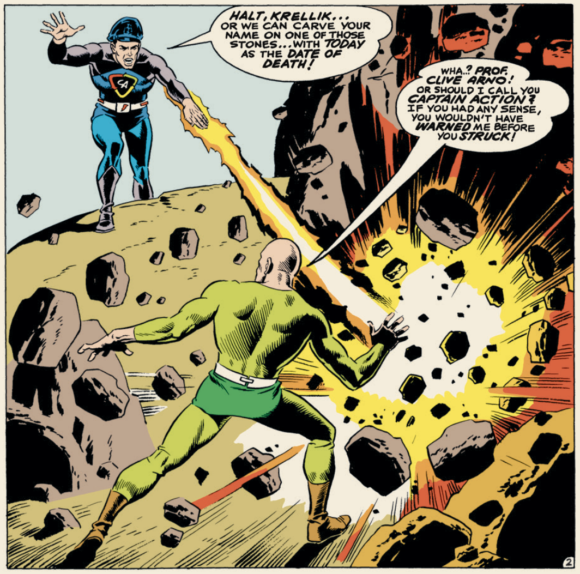
—
7. Coins! Captain Action’s super-powers come from coins! Yes, a giant cache of ancient magic coins made by gods of myth, but coins! I had coins! Right there in my pocket! For kids like me who wanted to play at being super-heroes but didn’t come from a distant planet or train their minds and bodies to the peak of human efficiency, as long as I had some coins in my pocket, I could pretend to be Captain Action! (See also: the appeal of speaking the magic word “Shazam” vs. trying to become a millionaire.)
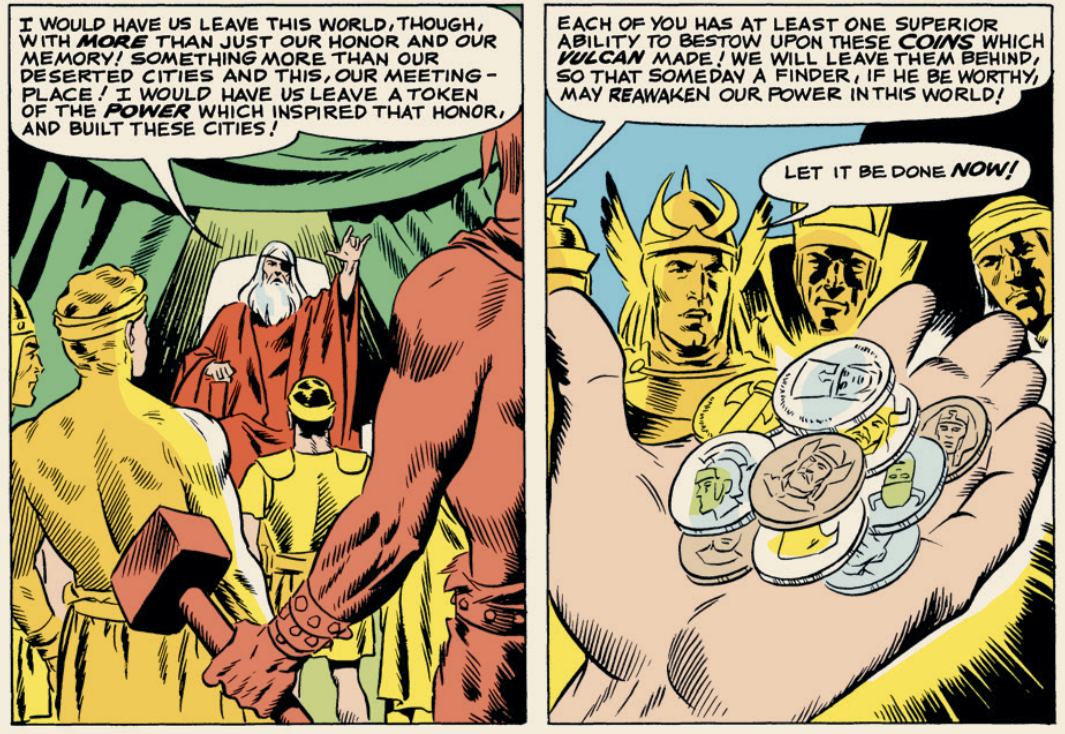
—
8. The Gods. OK, how do you get a big chest full of magic coins out of a relatively small group of Norse gods? I count them at about 12. Same with the Greek or Roman gods. There were a lot of coins in that treasure chest Captain Action found. Answer: make up a story claiming that all the gods of various cultural legends exist and that they’re all of one alien race, hence the surfeit of coinage. Good call.
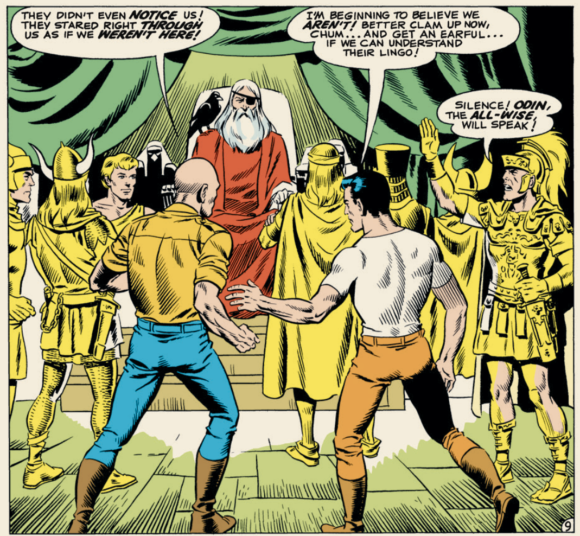
—
9. The Secret Identity. The toy Captain Action had no backstory, so it was up to Weisinger and Shooter to create one from whole cloth. Admittedly, Clive Arno didn’t stretch very far when he chose the name Captain Action, but there were adventures to have, let’s keep it moving.
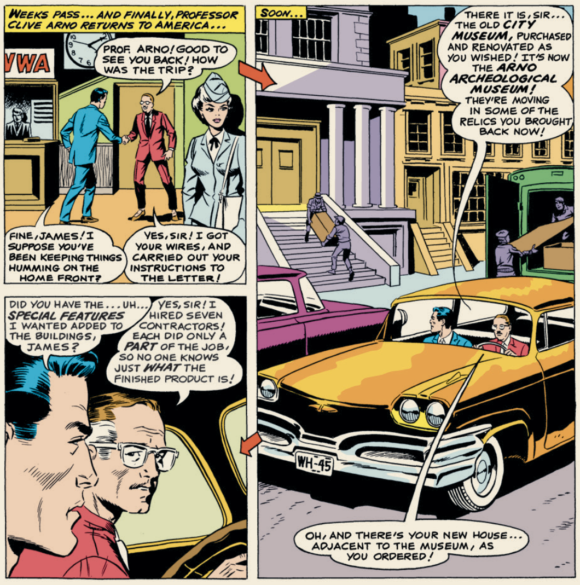
—
10. Khem the Panther. Captain Action’s son, Carl — a.k.a. Action Boy — eschewed pet goldfish and golden retrievers for a panther that he kept on a leash. Try leaving Carl out of your neighborhood softball game. I dare you.
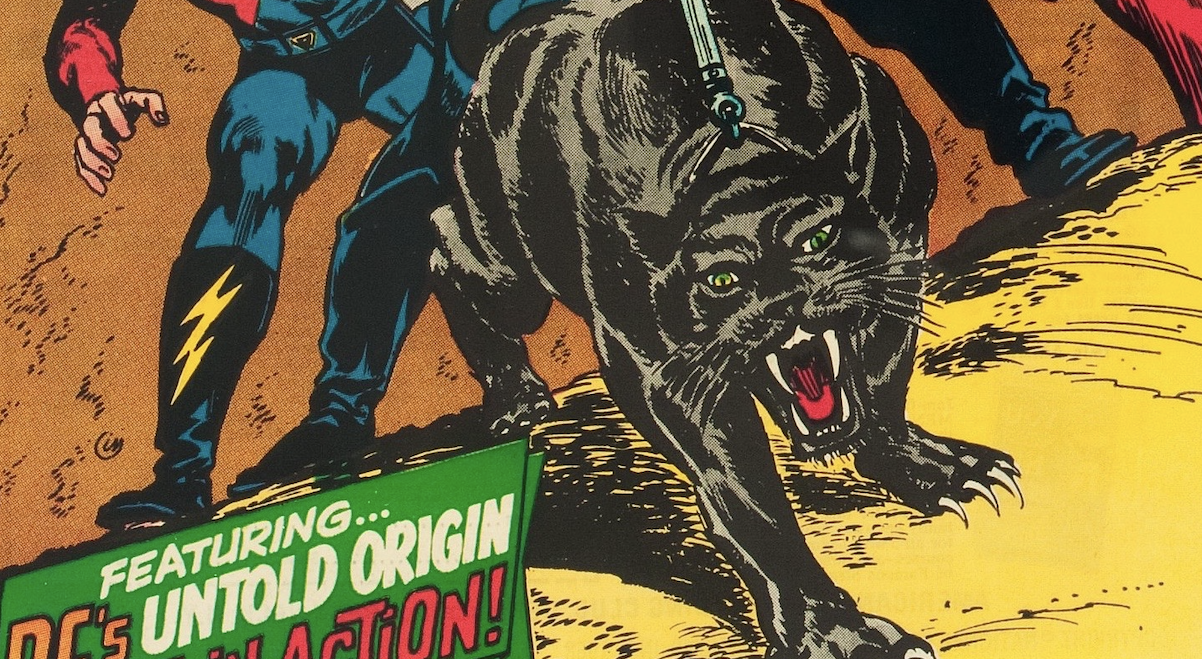
—
11. An Evil-Twin Twist. The wicked Krellik, who along with Clive Arno discovered the power-bestowing coins, decides not only to use them for thieving and looting but — having gotten wind of Clive’s ambition to eventually become a hero named Captain Action, complete with self-designed costume — disguises himself as Cap before Arno can even don the outfit, thus ensuring that Arno will be his fall guy the moment he hits the streets as an alleged do-gooder. Good plan, actually.
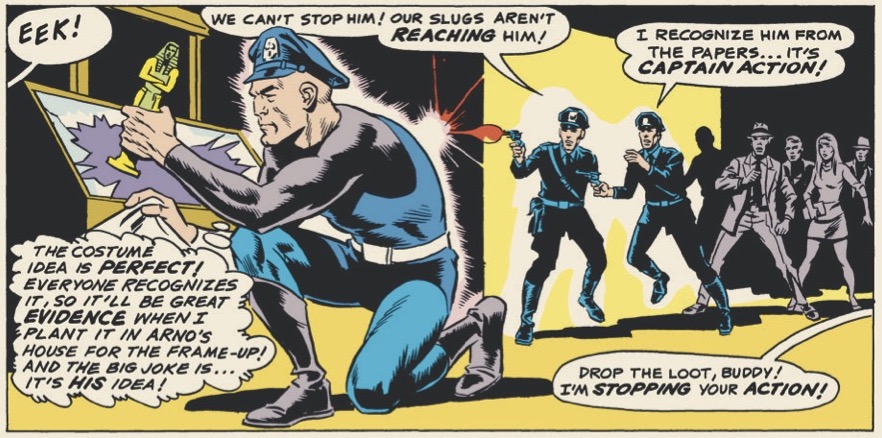
—
12. Action Boy’s Beret. It’s styled after the headwear of the Green Berets. It’s just a unique and inarguably cool look.
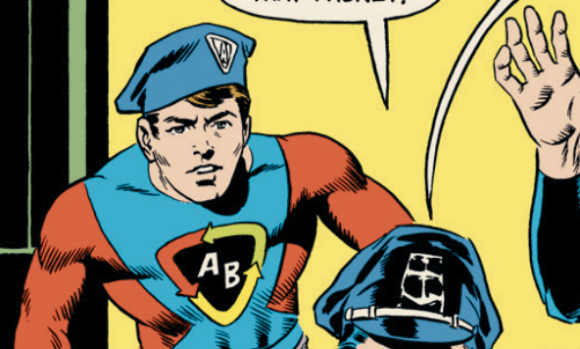
—
13. The Second Interior Splash Page. Again a rarity for DC comics of the era, where every page was crammed to the gills with panels, balloons, and wordy captions, Woody used a whole page to reprise the cover, hammering home the impact of the moment.
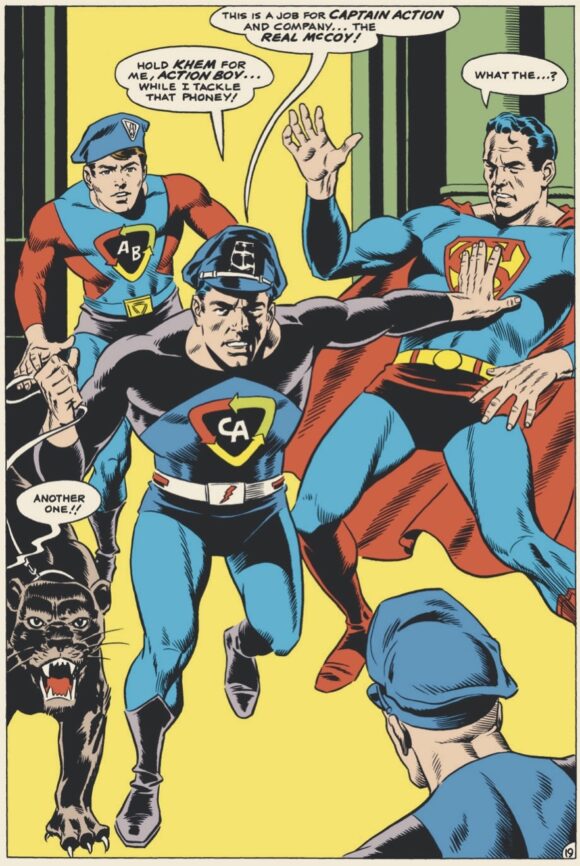
I honestly could go on and dissect this entire comic page by page. I could also talk about the rest of the series in the same detail… but I leave that to my fellow columnists, so come back tomorrow to see Paul Kuppereberg give Captain Action #2 the x-ray treatment!
—
NEXT: 13 REASONS TO LOVE CAPTAIN ACTION #2, by PAUL KUPPERBERG. Click here.
—
MORE
— The Complete CAPTAIN ACTION WEEK INDEX of Features. Click here.
— 13 REASONS TO LOVE CAPTAIN ACTION #1, by MARK WAID. Click here.
—
— MARK WAID has pretty much written every comics character ever created. His latest most-popular-comic-on-the-racks is… World’s Finest. Sorta full circle, eh?
